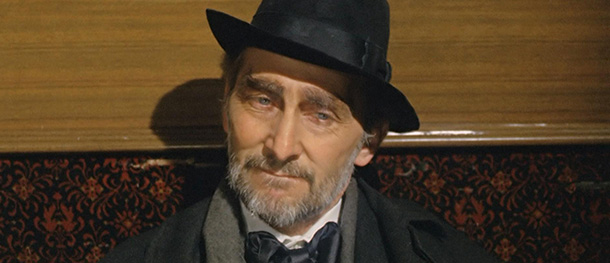Unveiling The Hells Angels: Myths And Realities

Table of Contents
The History of the Hells Angels Motorcycle Club
The Hells Angels Motorcycle Club's origins trace back to 1948 in San Bernardino, California. Emerging from the post-World War II era, the club initially comprised a group of veterans and other young men drawn to the freedom and camaraderie of motorcycle culture. The early years saw the club establish its distinctive identity, marked by a rebellious spirit and a rejection of mainstream society. Their early members laid the foundation for what would become a globally recognized, albeit controversial, organization.
- Founding date and location: 1948, San Bernardino, California.
- Key early chapters and their development: The initial San Bernardino chapter served as the base for expansion into other parts of California and beyond. The establishment of these early chapters set the stage for the club's growth and influence.
- Significant historical events impacting the club's trajectory: The club's history has been punctuated by clashes with law enforcement, internal conflicts, and significant media attention, all shaping its evolution and public image.
- Geographical expansion and the establishment of international chapters: From its Californian roots, the Hells Angels have expanded their reach globally, establishing chapters in numerous countries, further solidifying their international presence and influence.
The Hells Angels' Structure and Organization
The Hells Angels operate under a hierarchical structure, with a clear chain of command that facilitates communication and control across its chapters. This organization is crucial to the club's functioning, enabling coordination and the maintenance of its internal rules. Membership is not easily attained; prospective members go through a rigorous process, serving as "prospects" before potentially becoming full-fledged members.
- Description of the hierarchical structure: The structure typically involves a President, Vice President, Sergeant-at-Arms, and other officers, each with specific responsibilities.
- Explanation of chapter organization and communication: Chapters function relatively independently but are connected through the larger organization, allowing for information sharing and coordination of activities.
- The process of becoming a "prospect" and then a full-fledged member: This process is carefully controlled and involves demonstrating loyalty and adherence to the club's rules and values. Initiation rites are often secretive and shrouded in mystery.
- The meaning and importance of different Hells Angels patches and colors: The patches worn by members are highly symbolic, representing their rank, chapter affiliation, and years of service. They are a key visual representation of their identity and status within the club.
Criminal Activities and the Hells Angels
The Hells Angels have a long and well-documented history of involvement in various criminal activities. These range from drug trafficking and violence to racketeering and extortion. While attributing specific crimes to the entire organization is complex, individual members and chapters have faced numerous legal cases and convictions. Law enforcement agencies worldwide continuously investigate and monitor the club's activities.
- Types of criminal activities historically associated with the Hells Angels: Drug trafficking, particularly methamphetamine and cocaine, has been a significant source of revenue and a major focus of law enforcement efforts. Violence, including assault and murder, is also frequently associated with the club.
- Notable legal cases and convictions involving Hells Angels members: Numerous high-profile cases have involved the Hells Angels, leading to convictions for various crimes and highlighting the organization's criminal underbelly.
- Law enforcement strategies employed to combat Hells Angels activities: Law enforcement agencies use a variety of strategies, including surveillance, undercover operations, and targeted investigations, to counter the activities of the Hells Angels.
- The challenges faced in prosecuting Hells Angels members: Prosecuting Hells Angels members often presents unique challenges, including witness intimidation, a strict code of silence, and the complexity of establishing clear links between individuals and the broader organization.
The Hells Angels and Public Perception: Separating Myth from Reality
The Hells Angels' public image is often shaped by media portrayals, which frequently emphasize their criminal activities and rebellious nature. However, understanding their complexities requires moving beyond simplistic stereotypes. While the club's involvement in criminal activities is undeniable, it's crucial to avoid generalizations and recognize the diversity within the organization.
- Common myths and misconceptions about the Hells Angels: These often include exaggerated portrayals of their violence, organizational structure, and overall purpose.
- The influence of media (film, television, literature) on public perception: Media representations, whether fictional or documentary, have significantly influenced the public's understanding – and misunderstanding – of the Hells Angels.
- The club's attempts to control its image and public relations: The Hells Angels have, at times, sought to manage their public image, attempting to present a more positive or at least less negative view of their activities.
- The complexities of understanding the Hells Angels as a social group: The Hells Angels represent a complex social phenomenon, encompassing a variety of individuals and motivations that go beyond simple categorizations of "criminals" or "outlaws."
Conclusion
Unveiling the full story of the Hells Angels requires careful consideration of their history, intricate structure, documented criminal activities, and the ongoing challenge of separating fact from the pervasive myths that surround them. Their existence is a complex interplay of biker culture, organized crime, and carefully constructed public image. While their involvement in criminal activities cannot be ignored, understanding the Hells Angels demands a nuanced approach, moving beyond simplistic stereotypes and acknowledging the multifaceted realities of this notorious motorcycle club. To further understand the complexities of the Hells Angels, explore reputable sources such as academic journals and investigative journalism focusing on organized crime. Further investigation into the Hells Angels is crucial to forming a complete and unbiased understanding of this organization.

Featured Posts
-
 Memorial Day 2025 Air Travel When To Book And When To Avoid
May 25, 2025
Memorial Day 2025 Air Travel When To Book And When To Avoid
May 25, 2025 -
 Glastonbury 2024 Unofficial Us Band Reveal Sparks Speculation
May 25, 2025
Glastonbury 2024 Unofficial Us Band Reveal Sparks Speculation
May 25, 2025 -
 High End Spending And Presidential Protocol An Analysis Of Luxury Watches And Official Functions
May 25, 2025
High End Spending And Presidential Protocol An Analysis Of Luxury Watches And Official Functions
May 25, 2025 -
 Frankfurt Equities Daxs Continued Ascent Record Within Reach
May 25, 2025
Frankfurt Equities Daxs Continued Ascent Record Within Reach
May 25, 2025 -
 Unveiling The Horrors A Look At Dr Terrors House Of Horrors
May 25, 2025
Unveiling The Horrors A Look At Dr Terrors House Of Horrors
May 25, 2025
Latest Posts
-
 Kazuo Ishiguro How Memory And Forgetting Shape Imagination In His Fiction
May 25, 2025
Kazuo Ishiguro How Memory And Forgetting Shape Imagination In His Fiction
May 25, 2025 -
 Memory And Forgetting In The Works Of Kazuo Ishiguro An Imaginative Exploration
May 25, 2025
Memory And Forgetting In The Works Of Kazuo Ishiguro An Imaginative Exploration
May 25, 2025 -
 Kazuo Ishiguro Exploring Memory Forgetting And Imagination In His Novels
May 25, 2025
Kazuo Ishiguro Exploring Memory Forgetting And Imagination In His Novels
May 25, 2025 -
 The Jenson And The Fw 22 Extended Features And Benefits
May 25, 2025
The Jenson And The Fw 22 Extended Features And Benefits
May 25, 2025 -
 Jenson Fw 22 Extended A Review Of The Enhancements
May 25, 2025
Jenson Fw 22 Extended A Review Of The Enhancements
May 25, 2025
